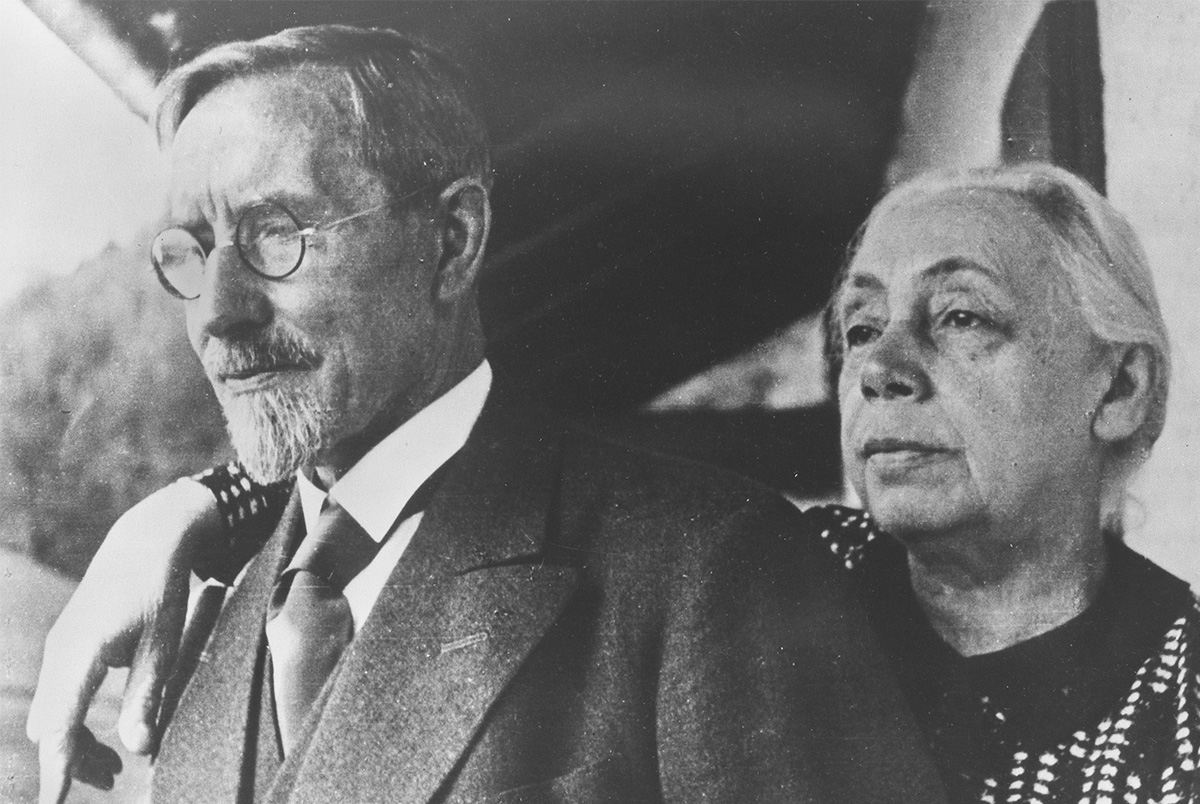LECTURE
on April 3, 2025
at 19.00
Entrance fee 8,00 euros / reduced 5,00 euros
The Kollwitz exhibition
can be visited until 19.00.
You are also welcome
to take part in the
Slow Art guided tour
with director
Dr Josephine Gabler
at 18.00.
More than the man at Käthe’s side
Without her husband Karl (1863-1940), Käthe Kollwitz’ work would probably not have been possible. He supported the artist throughout her decades-long, turbulent marriage. “I know of no other person who can love so much, so wholeheartedly,” she once summarised. Even on his deathbed, his thoughts were primarily on her artistic work. “Käthe is very handicapped and stressed by my illness,” Karl complained, and she was unable to go to the studio for weeks because of him.
At this time, Kollwitz was working on the sculpture “Farewell”, which can be seen in the Käthe Kollwitz Museum in Berlin. A touching homage to their time together, from which she does not want to let go.

Käthe Kollwitz, Abschied (Farewell), Bronze, 1940/41 © Käthe-Kollwitz-Museum Berlin, photo Kienzle|Oberhammer
With his unshakeable belief in their common bond and the timeless significance of her work, Karl helped the artist, who suffered from mood swings and self-doubt, to overcome many a creative crisis. Käthe appreciated his steadfastness and political clarity. While her world view absorbed various influences and was subject to change, Karl remained a pragmatist, social democrat and unwavering pacifist throughout his life.
His influence on the character of Kollwitz’ work should also not be underestimated. The fact that she did not become the maudlin “depictor of misery” that she was often labelled as is also thanks to the insights she gained into her husband’s medical practice and the living conditions of his patients. This medical practice also secured the financial foundation for the family for many years.
And yet Karl Kollwitz was much more than just the man at Käthe’s side. The physician and committed social politician, who worked to the point of exhaustion, was already a Berlin legend during his lifetime and was even dubbed the “Christ of Senefelder Platz” by one newspaper.
Combining being a doctor with political action was considered a taboo at the time, but for Karl Kollwitz it was a necessity. As co-founder of the “Social Democratic Doctors’ Association” and author of numerous essays, he fought for the doctor-patient relationship to be viewed holistically and not exclusively from an economic perspective. The debates he initiated seem astonishingly topical and are still going on today.
Sonya and Yury Winterberg use unpublished documents to honour the life and work of an impressive and unjustly almost forgotten personality.
The author couple Sonya and Yury Winterberg have been working on topics of history, contemporary history and art for more than thirty years. Their documentary films have won numerous awards and their non-fiction books have been translated into nine languages. Their exploration of the life and work of Käthe Kollwitz resulted in the biography “Kollwitz”, the exhibition “Wie war mein Leben stark in Leidenschaft – Käthe Kollwitz in Photographien und Selbstzeugnissen” at the Käthe Kollwitz Museum in Cologne and the documentary film “Kollwitz – Ein Leben in Leidenschaft” (arte/rbb) in 2015.



